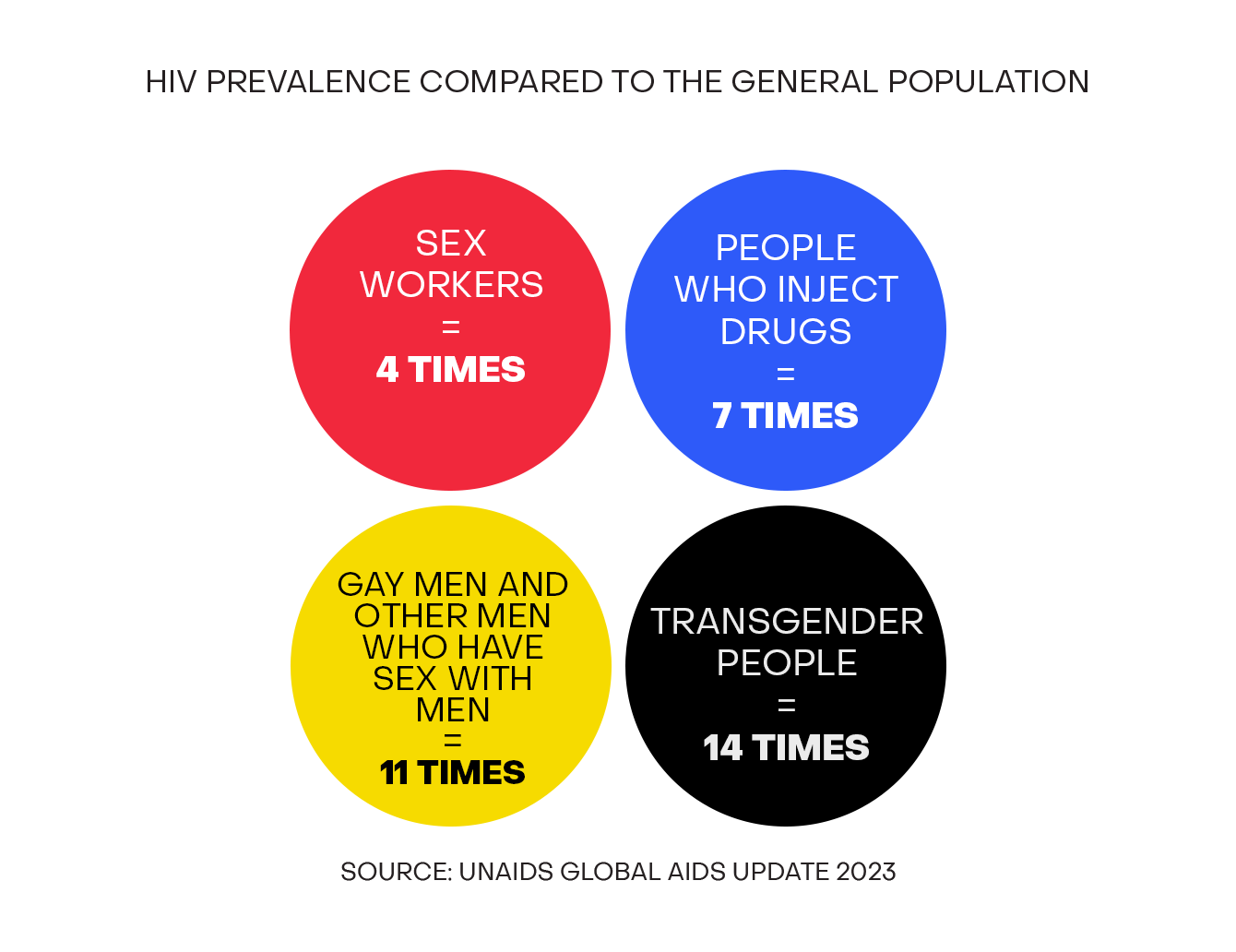Who Are Key Populations?
HIV
In the context of HIV, key populations include:
- Men who have sex with men.
- Trans and gender diverse people.
- Sex workers.
- People who use and/or inject drugs.
- People living with HIV.
- People in prison and other closed settings.
These populations are socially marginalized, often criminalized and face a range of human rights abuses that increase their vulnerability to HIV.
The Global Fund is the leading external funder of HIV programs for key populations across many regions. The Global Fund Strategy emphasizes the importance of achieving scale and coverage of HIV programs for and with key populations. It should be the goal of each country to scale up services so that 95% of key populations are covered.

TB
Prisoners and incarcerated populations, people living with HIV, migrants, refugees, miners and other people who work in poorly ventilated conditions, and indigenous populations are all groups that are highly vulnerable to TB. They can also experience significant marginalization, reduced access to quality services and human rights violations.
Miners in Southern Africa, for example, are reported to have greater incidence of TB than any other working population in the world. TB incidence among migrant miners in this region is 10 times higher than in the communities from which they originate.
The level of TB in prisons has been reported to be up to 100 times higher than the level in the general population, according to the World Health Organization. Cases of TB in prisons may account for up to 25% of a country’s TB burden.
Among other populations, people living with HIV are 18 times more likely to develop active TB disease than people without HIV, according to the World Health Organization. At least 1 million children become ill with TB each year, representing about 10% of all TB cases.
The Global Fund focuses on countries with the highest proportion of key populations at risk of or living with TB, including people living with TB/HIV co-infection, migrants, refugees and displaced people, miners, prisoners, children in contact with people who have TB, and people who inject drugs.
Malaria
The concept of “key populations” in the context of malaria is relatively new and not yet as well defined as for HIV and TB. However, there are groups that meet the criteria for key populations. Refugees, migrants, pregnant women, children under 5, internally displaced people and indigenous populations in malaria-endemic areas are often at greater risk of transmission, usually have decreased access to care and services, and are also often marginalized.
For malaria, the Global Fund supports a comprehensive approach that combines education, prevention, diagnosis and treatment, especially for children under 5 and pregnant women in malaria-endemic zones. It also puts a particular focus on an innovative regional approach to reach populations who have difficulties in accessing care.